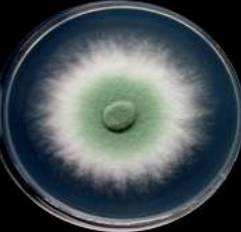

Presently, solid state fermentation technology uses food grains including sorghum and bajra for commercial mass multiplication of Trichoderma spp at an industrial scale. However, the food grains are comparatively expensive, have short storage life and may not be available freely due to climatic stress. So a low cost mass multiplication medium for faster growth of Trichoderma spp. is developed. This material supports better growth of biofungicide compared to existing methods and addition of synthetic sticker is not required while making its formulation. The process is cheaper than the existing methods and is based on the material which is inexpensive and available locally. Hence, in true sense this technology generates wealth from waste.
The field applications of Trichoderma spp. require mass multiplication which can be done using solid as well as liquid state fermentation. In the industrialized nations, liquid fermentation is extensively used for multiplication of Trichoderma spp. for commercial formulation. However, solid state fermentation is preferred in developing countries. Presently, solid state fermentation technology uses food grains including sorghum and bajra for commercial mass multiplication of Trichoderma spp at an industrial scale. However, the food grains are comparatively expensive, have short storage life and may not be available freely due to climatic stress. So a low cost mass multiplication medium for faster growth of Trichoderma spp. is developed. This material supports better growth of biofungicide compared to existing methods and addition of synthetic sticker is not required while making its formulation. The process is cheaper than the existing methods and is based on the material which is inexpensive and available locally. Hence, in true sense this technology generates wealth from waste.
Biological suppression of plant pathogenic fungi has been dominated by use of Trichoderma spp all over the world for last 2-3 decades. Trichoderma spp. act as a biofungicide against many plant pathogenic fungi and have been found to induce systemic resistance in plants. The field applications of Trichoderma spp. require mass multiplication which can be done using solid as well as liquid state fermentation. In the industrialized nations, liquid fermentation is extensively used for multiplication of Trichoderma spp. for commercial formulation. However, solid state fermentation is preferred in developing countries like India due to low initial investment as well as availability of cheap labour and space. Presently, solid state fermentation technology uses food grains including sorghum and bajra for commercial mass multiplication of Trichoderma spp at an industrial scale. However, the food grains are comparatively expensive, have short storage life and may not be available freely due to climatic stress. Thus there is an urgent need to develop a formulation based on easily available material and with lower input cost. We have developed a low cost mass multiplication medium for faster growth of Trichoderma spp. This material supports better growth of biofungicide compared to existing methods and addition of synthetic sticker is not required while making its formulation. Another advantage is that this material can be used for both solid as well as liquid fermentation. This material provides longer shelf life of the biofungicides and also improves the resistance of the plant against diseases. The process is cheaper than the existing methods and is based on the material which is inexpensive and available locally. This technology will thus be a boon to the biopestcides industry based on Trichoderma spp.
RAW MATERIALS
INFRASTRUCTURE
MANPOWER
